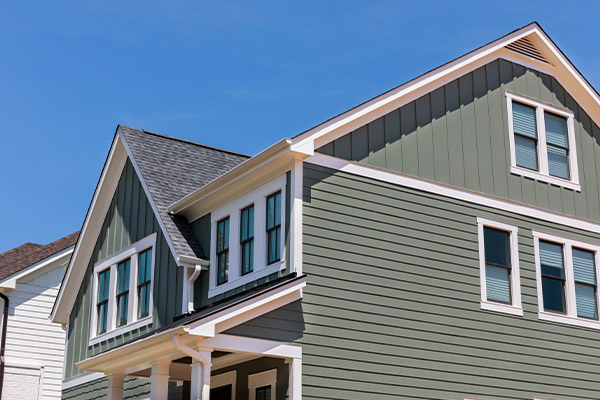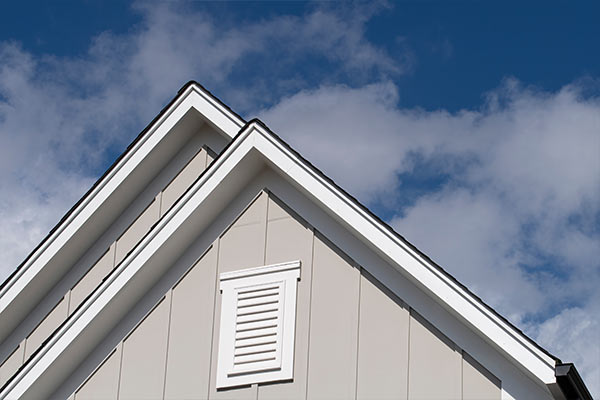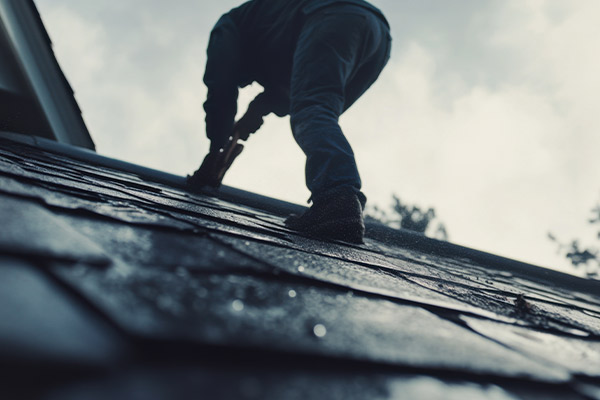Table of Contents
ToggleUpgrading your home’s exterior with new siding is a major investment—one that adds value, boosts curb appeal, and enhances your home’s resistance to the elements. Whether you’ve chosen vinyl, fiber cement, or classic wood, proper care is essential if you want it to last. Understanding the right siding maintenance routine can extend its life and keep it looking sharp for years to come.
In this guide, we’ll walk you through essential maintenance tips for new siding, including best practices for cleaning, inspecting, and caring for your exterior throughout Minnesota’s changing seasons.
Why New Siding Reduces Long-Term Maintenance
One of the biggest benefits of installing new siding is the reduced need for frequent upkeep. Modern siding materials are designed with durability and convenience in mind. Vinyl and fiber cement siding resist common issues like warping, fading, and insect damage, making them easier to manage compared to traditional materials like wood.
When siding is installed properly, including the use of moisture barriers beneath the surface, it acts as a strong shield against water damage and wind-driven rain. These barriers are crucial in preventing rot and mold from developing behind the panels—especially during Minnesota’s wet spring months and snowy winters.
While new siding lowers the overall effort required to maintain your home’s exterior, some care is still necessary to preserve its appearance and function. That’s where these siding maintenance tips come in.
Choosing the Right Siding: What to Expect from Each Material
Different types of siding come with different maintenance needs. Understanding what your siding requires will help you set a realistic maintenance schedule and avoid surprises down the road.
Vinyl siding is known for being low-maintenance. It doesn’t require painting or sealing and is resistant to moisture and pests. Occasional cleaning is typically all that’s needed to keep it looking fresh.
Fiber cement siding is another durable option, offering the look of natural wood with greater resilience. While it may require repainting after a number of years, it holds up exceptionally well in extreme temperatures.
Wood siding, on the other hand, requires a more hands-on approach. While it offers unmatched charm and character, it needs to be painted or stained regularly to protect it from weather damage. In areas like Blaine, where snow, rain, and freeze-thaw cycles are part of the norm, failing to maintain wood siding can lead to premature deterioration.
No matter which material you choose, investing in proper installation with moisture barriers is critical. It creates a defense system that keeps your siding performing at its best over the long haul.
The Importance of Regular Cleaning
Keeping your siding clean isn’t just about appearances—it’s also a vital part of maintaining the integrity of your home’s exterior. Over time, dirt, grime, mold, and mildew can accumulate on the surface of your siding. If left untreated, these substances can cause discoloration, staining, or even material breakdown.
For most homes, a thorough cleaning once or twice a year is recommended. Use a soft brush or cloth along with a mild cleaning solution to scrub away debris. For vinyl or fiber cement, a low-pressure washer may be used, but be careful to avoid high-pressure settings that could damage the surface. Wood siding should be cleaned more delicately to avoid stripping the paint or stain.
Routine cleaning is one of the most effective maintenance tips for new siding because it helps preserve the material’s color and structure while also giving you a chance to spot early signs of wear or damage.

Inspecting Your Siding for Early Warning Signs
One of the most often overlooked parts of siding maintenance is the visual inspection. Homeowners should get into the habit of walking around their home at least twice a year—ideally in the spring and fall—to check for issues that may require attention.
Look for any cracks, warping, soft spots, or areas where panels appear loose or misaligned. These could be signs of water intrusion or wind damage. Wood siding, in particular, should be checked for peeling paint, splintering, or areas where moisture may be seeping in.
The sooner you catch small problems, the easier (and cheaper) they are to fix. Delaying repairs could lead to more extensive damage to your home’s insulation, sheathing, or even its structural framing.
Scheduling professional inspections after heavy storms is also a smart step. Experts can identify damage that may not be visible to the untrained eye—and help you plan necessary repairs before they worsen.
Seasonal Care to Extend the Life of Your Siding
In Minnesota, siding maintenance isn’t a one-size-fits-all process—it changes with the seasons. Weather conditions can shift quickly, and your siding must be prepared to handle it all.
Spring and Summer
During spring and summer, focus on cleaning off any dirt and debris left behind by winter weather. This is also a good time to check for mold or mildew, especially in shaded or damp areas. Trim back plants and bushes that may be rubbing against the siding and causing damage over time.
Fall and Winter
As fall approaches, clear away leaves and organic debris that can collect at the base of your home. Clogged gutters and downspouts can lead to water spilling over and seeping behind the siding. Inspect caulking around windows and doors to ensure everything is sealed tight before the freeze sets in.
In winter, your siding faces its toughest test. Ice dams, snow buildup, and sub-zero temperatures can all cause wear. After snowstorms, gently clear any heavy snow leaning against your siding and look for signs of stress or cracking once temperatures rise.
Final Thoughts: Protect Your Investment with Smart Siding Maintenance
When you invest in new siding, you’re not just improving your home’s appearance—you’re securing its protection for the long haul. With these practical maintenance tips for new siding, you can keep your exterior in top shape, avoid costly repairs, and get the most value from your installation.
Whether you need help choosing the right siding for your home, performing an inspection, or handling repairs, Roofs R Us in Blaine, MN is here to help. Our team understands the local climate and knows how to install and maintain siding that stands up to Minnesota’s toughest weather conditions.
Call (612) 282-8092 or contact us today to learn more about our siding services or schedule your next maintenance check.




